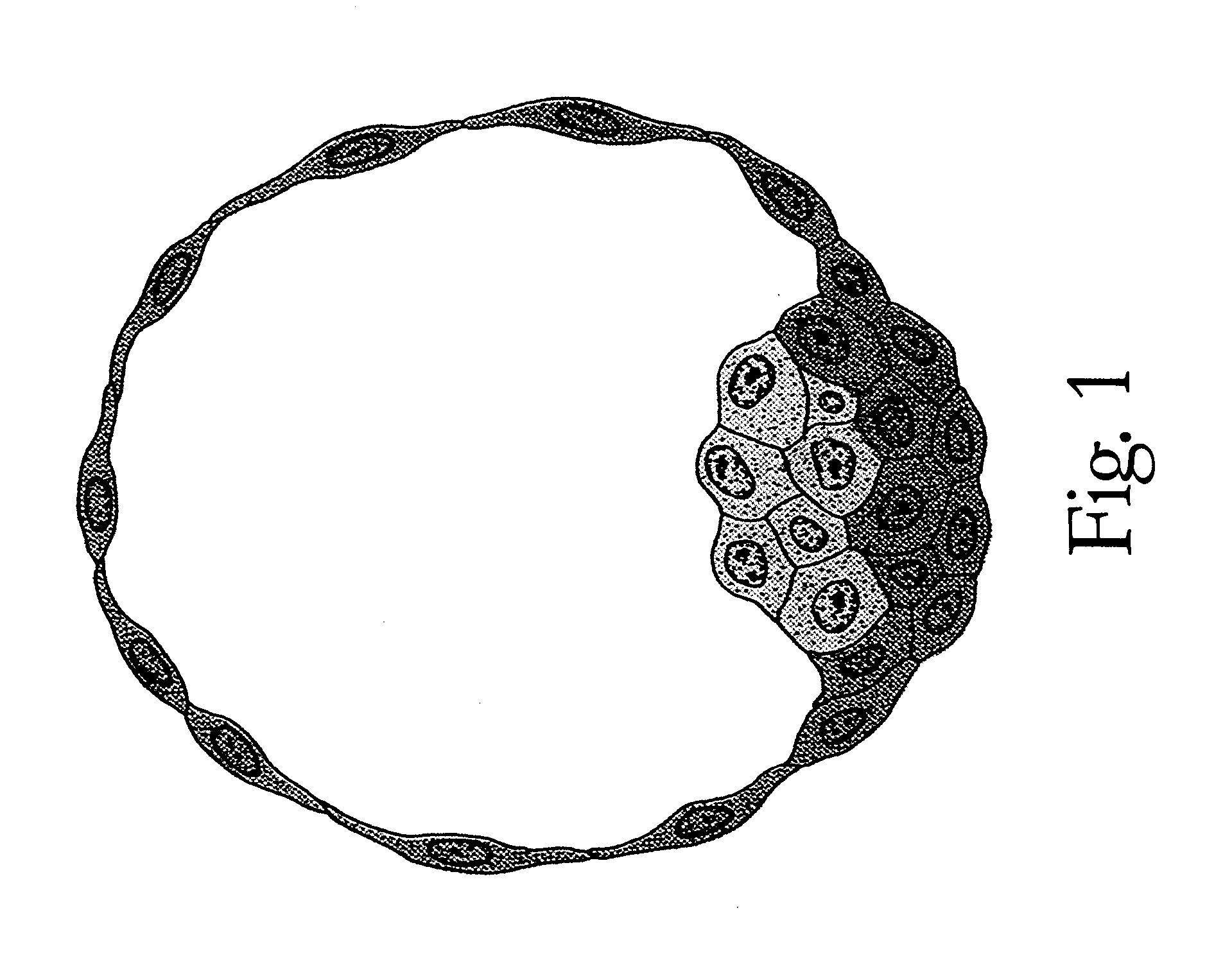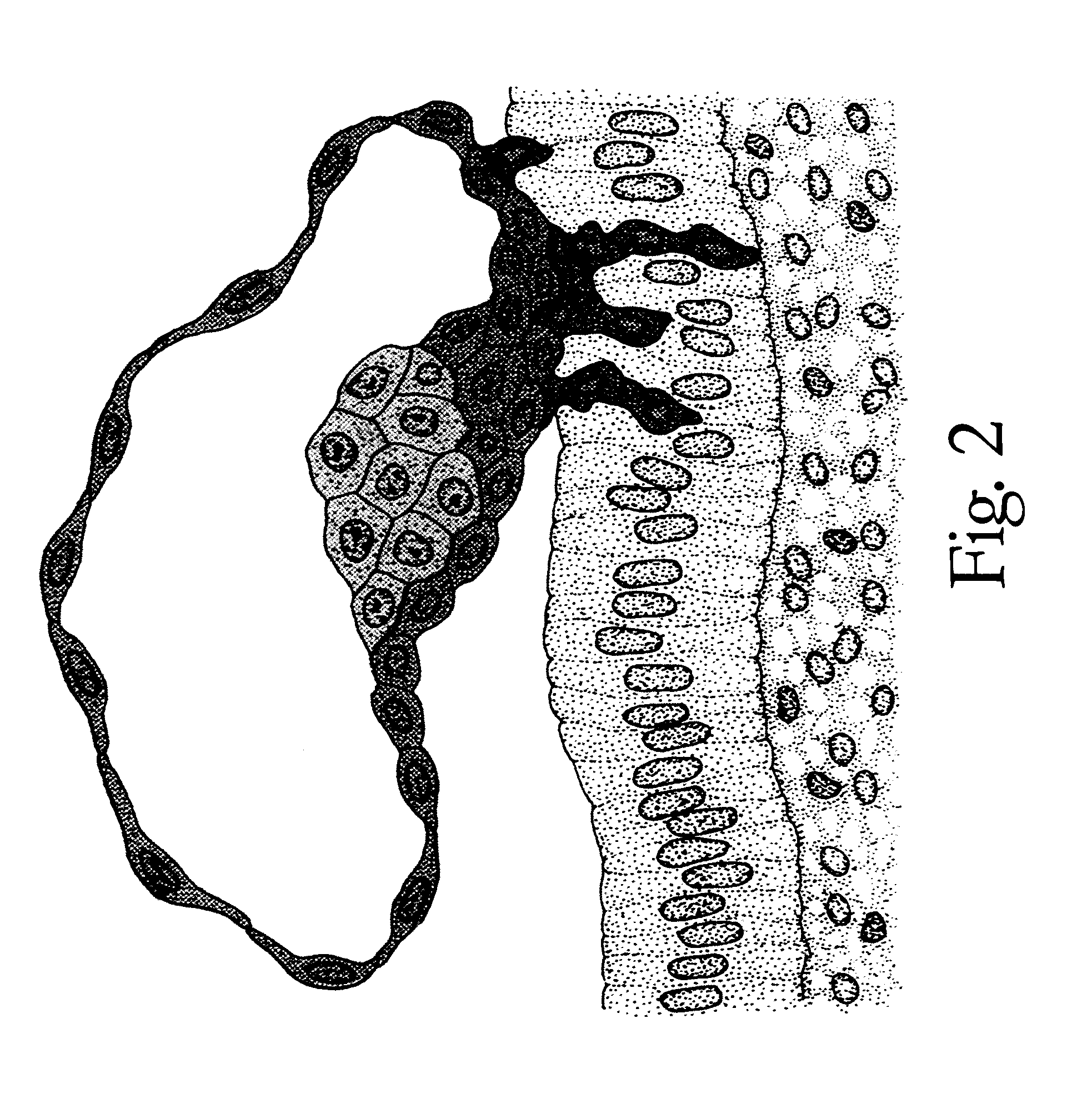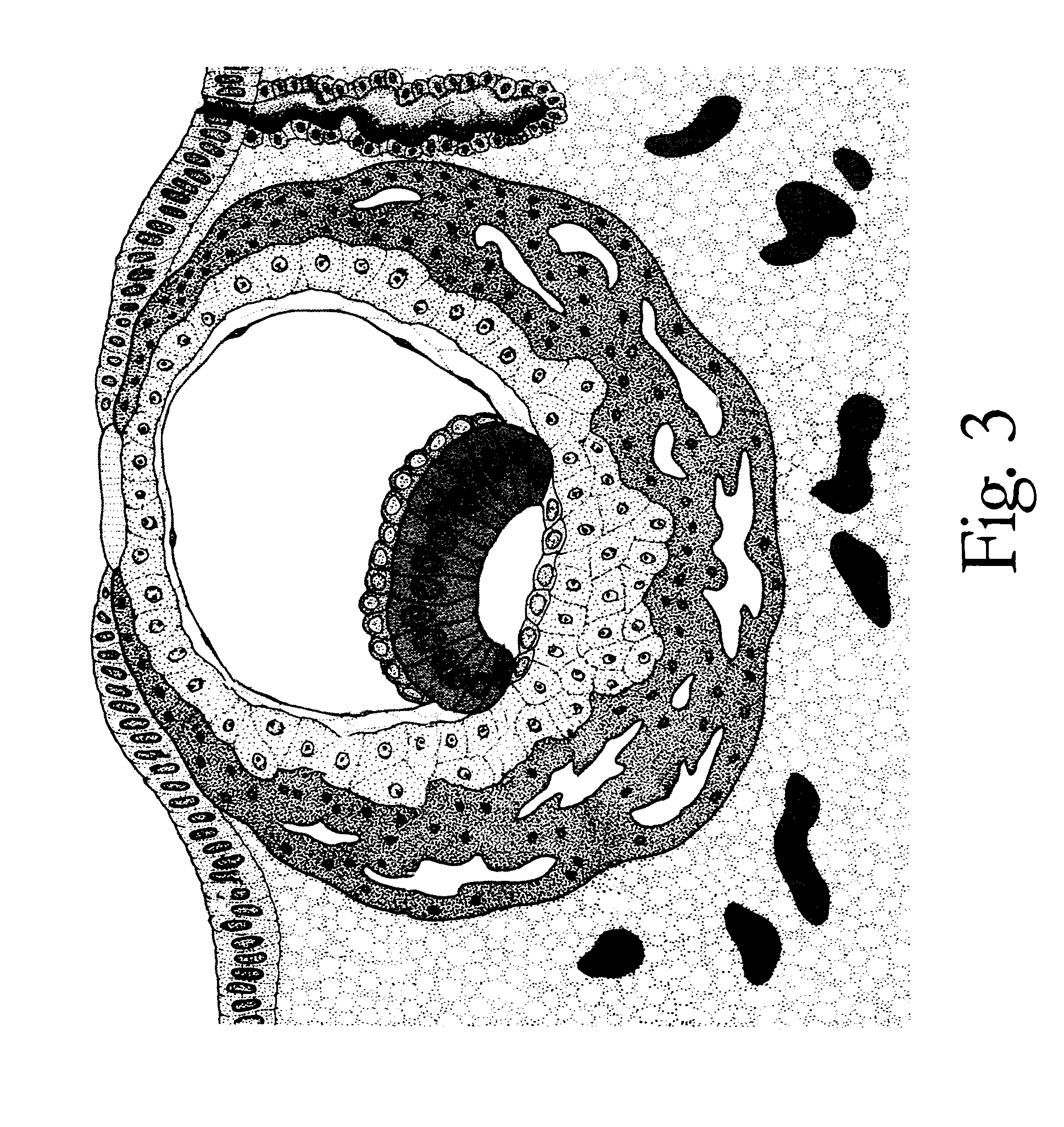Method of making and using a library of biological material
a biological information and library technology, applied in the field of building and using a library of biological information, can solve the problems of complication or neonatal abnormality, physician and family may lose the opportunity to prevent a recurrence of the same complication, and achieve the effect of low initial cos
- Summary
- Abstract
- Description
- Claims
- Application Information
AI Technical Summary
Benefits of technology
Problems solved by technology
Method used
Image
Examples
Embodiment Construction
[0119]Viewing each placenta not as an isolated tissue sample but as a sample from a larger set of samples, a library of placental tissue is created. The library's “collection” grows by saving the placenta or a sample from the placenta of most, if not all, births. The library of placental tissue of a population may then be used for subsequent research and / or diagnosis. In addition to examination focused on learning information about a single individual, the library may also prove useful for epidemiologic or other research purposes. For example, such a library might reveal information concerning so-called “toxic torts”, drug use and effectiveness, and other information derivable from a survey of a large collection of tissue samples. These uses of the library are exemplary, and other uses are as unpredictable and numerous as the reasons readers withdraw books from libraries.
[0120]The first step to creating a tissue library is to acquire tissue. This step is illustrated schematically at...
PUM
| Property | Measurement | Unit |
|---|---|---|
| incubation time | aaaaa | aaaaa |
| thick | aaaaa | aaaaa |
| temperatures | aaaaa | aaaaa |
Abstract
Description
Claims
Application Information
 Login to View More
Login to View More - R&D
- Intellectual Property
- Life Sciences
- Materials
- Tech Scout
- Unparalleled Data Quality
- Higher Quality Content
- 60% Fewer Hallucinations
Browse by: Latest US Patents, China's latest patents, Technical Efficacy Thesaurus, Application Domain, Technology Topic, Popular Technical Reports.
© 2025 PatSnap. All rights reserved.Legal|Privacy policy|Modern Slavery Act Transparency Statement|Sitemap|About US| Contact US: help@patsnap.com



